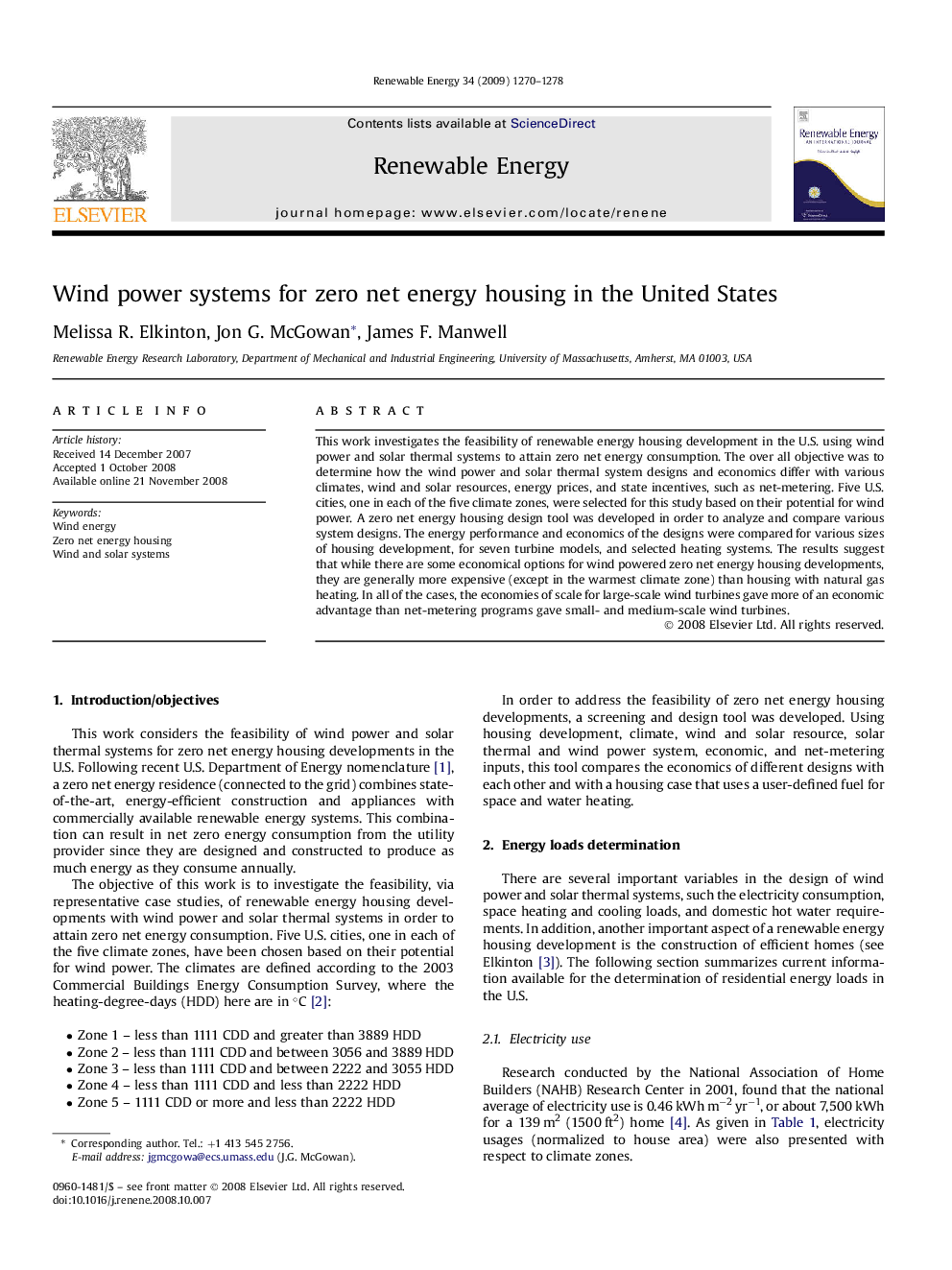| Article ID | Journal | Published Year | Pages | File Type |
|---|---|---|---|---|
| 302231 | Renewable Energy | 2009 | 9 Pages |
This work investigates the feasibility of renewable energy housing development in the U.S. using wind power and solar thermal systems to attain zero net energy consumption. The over all objective was to determine how the wind power and solar thermal system designs and economics differ with various climates, wind and solar resources, energy prices, and state incentives, such as net-metering. Five U.S. cities, one in each of the five climate zones, were selected for this study based on their potential for wind power. A zero net energy housing design tool was developed in order to analyze and compare various system designs. The energy performance and economics of the designs were compared for various sizes of housing development, for seven turbine models, and selected heating systems. The results suggest that while there are some economical options for wind powered zero net energy housing developments, they are generally more expensive (except in the warmest climate zone) than housing with natural gas heating. In all of the cases, the economies of scale for large-scale wind turbines gave more of an economic advantage than net-metering programs gave small- and medium-scale wind turbines.
